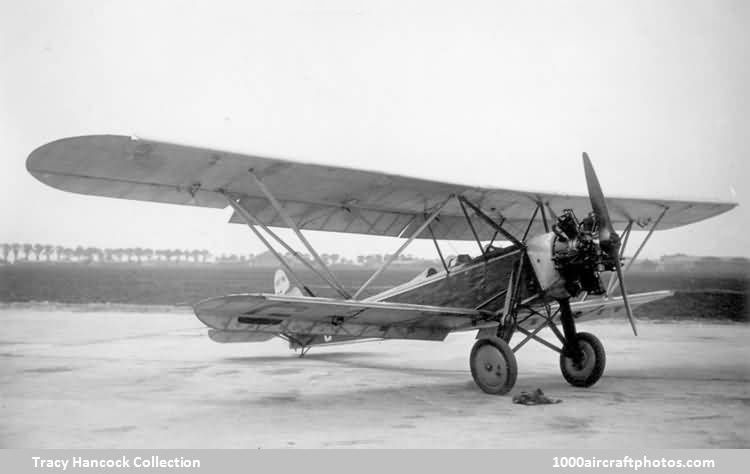Detail design began in June and the fuselage drawings were issued to the experimental shop in August. The Fund's British representative, Major Robert Mayo, went to the competition venue, Mitchel Field, Long Island, in September to sort out anomalies between the British and American airworthiness regulations and by November 14, 1928, the aeroplane was ready for assembly at Cricklewood. The Mongoose engine was promised for mid-December, but in fact arrived a month later. Although the rules called for dual controls, it was agreed in February to save time by omitting them until preliminary flight tests had been cleared and the final design standard was sealed on March 27, 1929, the primary aim being to earn as many bonus marks as possible for short take off and landing performance.
By this time the cumbersome title 'Guggenheim Competition Biplane' had been shortened by the editor of Flight to 'Gugnunc' – a catch-word taken from Bertram Lamb and Austin Payne's popular 'Pip, Squeak and Wilfred' strip cartoon on the children's page of the Daily Mirror; the sobriquet stuck and was eventually accepted in official reports.
When weighed on April 26, 1929, the Gugnunc was found to be above the estimated gross weight, but this included an increase in fuel tankage, allowance for the prescribed instruments and the engine overweight. The front half of the fuselage was of mixed wood and welded steel-tube construction, with cockpit coamings of minimum size, plywood covering and three-ply luggage compartment linings; the aft half was of wire-braced spruce with doped fabric covering and the wings and tail unit were also all wood with fabric covering. Full-span leading edge slots were installed on both upper and lower wings, together with full-span trailing edge flaps. The top outer control slots were free to operate automatically and the inner lift slots, together with those on the bottom wing, were connected to the flaps so as to open automatically at a predetermined angle of attack and lower all the flaps together, no manual control of the flaps being provided.
Chief Designer George Volkert made a list of the possible combinations of slot and flap operations as a guide to test pilot Tom Harry England, who was to test them progressively till the best compromise was found. England made the first two brief handling flights in very gusty weather on April 30 and reported all well except for initial slackness in the aileron circuit which was rectified before the second flight. On May 6 the aileron control runs were revised to reduce friction, but on the 8th England reported that the ailerons and elevators were still heavy and the tail plane incidence control too slow in operation; he asked for a 'cheese cutter' lever instead of a hand-wheel. Next day auto-slot tests were made and on the 16th test pilot James Cordes flew the Gugnunc in formation with England, who flew a Moth which had a calibrated airspeed indicator, recording a top speed of 103 mph at 1,000 ft (166 kmh at 305 m) and 104 mph (167 kmh) at sea level; the minimum level speed measured was 29 mph (47 kmh) with slots and flaps free and engine on.
To reduce drag, the large windscreen and rubber coaming surround for the pilot's (front) cockpit were replaced by a small celastoid screen and the flap hinges were sealed with fabric, but this only raised the top speed by 2 mph (3.2 kmh). Next the flaps were rigged 0.5 in (12.7 mm) up, which added another 2 mph (3.2 kmh) but also raised the minimum flying speed to 32 mph (51 kmh). Concurrently, a stress check at the actual flying weight of 2,043 lb showed the need for stronger outer front wing struts and intermediate cabane struts to cater for the inverted aerobatic case, so further weight and drag saving changes became necessary. These were:
